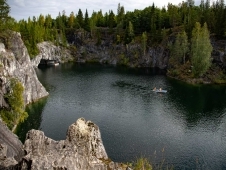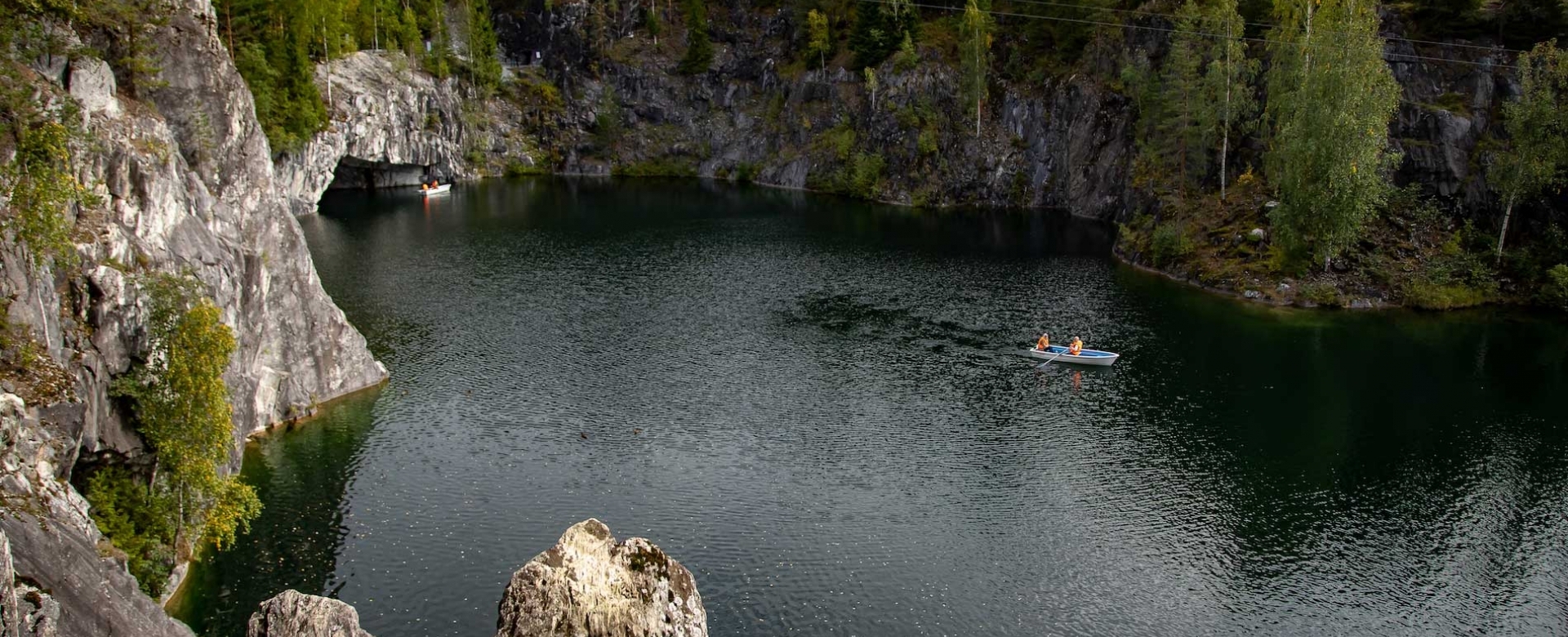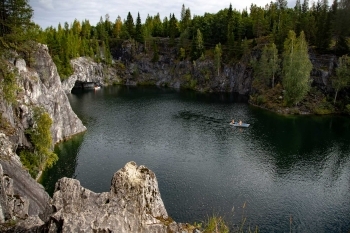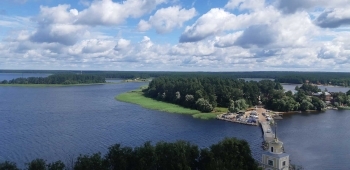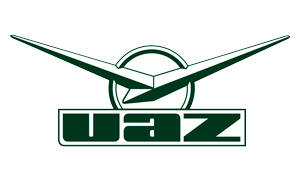Duration: 12 days / 11 nights
Driving distance: 1700 km (40% asphalt and 60% off-road)
Types of driving: Highway, forest roads, off-road
Type of tour: Self-drive tour
Vehicles: UAZ PATRIOT
Minimum driver age: 21
Group size: from 6 to 25 person
Accommodation: Best hotels on the route
Meals: 3 times a day
Best time: July - June
Day 1. Moscow. Arrival.
Arrival to Moscow. Pick-up at airport arrivals hall. Transfer to the hotel, check-in. Rest of the day at leisure.
In the mood for sightseeing in Moscow? We are happy to offer you some ideas. We are happy to offer you fascinating tours around Moscow, just pick the ones you find more appealing.
Option 1: Walking tour of Moscow center: Red Square, followed by a short introduction to Moscow metro (1,5 -2 hrs). You will see the medieval Kremlin wall, St.Basil’s cathedral (exterior),Lenin’s Tomb, GUM mall , Kazan church, State History Museum and the Moscow metro (Revolution Square station).
Option 2: Tour with a private driver to the most iconic streets and architecture (3-3,5 hrs), the highlights of which include: St.Basil's Cathedral’s, the Cathedral of Christ the Saviour, Bolshoi Theatre and the Alexander Garden, the building of State Duma , Lubyanka Square, The House on the Embankment and The Russian State Library, Sparrow Hills, Moscow-City, Poklonnaya Hill, Victory Park.
Option 3: Moscow River Cruise on amazing Radisson yacht (2,5 hrs). Accommodation in 5* hotel (Meals: -/ - /-)
Day 2. From Moscow to Seliger lake Distance: 383 km.
Hands-on introduction to the cars, and then we set off on our journey! We head north/north-west to Tver and Novgorod Regions and end up at Seliger Lake, which in fact includes a chain of natural reservoirs formed after the ice age. Hundreds of large and small lakes and islands surrounded by gorgeous coniferous forests create an amazing landscape.
The view from your car window will change from peaceful villages hidden between the lakes to the elegant Orthodox churches on the hilltops to the winter wilderness scenery – surely, a novel experience for some. Off-road driving across the hilly terrain and walks along forest trails are definitely in store. In the evening we arrive at our hotel, located near the water.
If time allows, you are welcome to take a motorboat or ATV ride around the vicinity as well. Accommodation in cottages (Meals: B/L/D)
Day 3. Lake Seliger – Veliky Novgorod. Distance: 320 km
In the morning we leave this beautiful place and set off for another exciting day.
Before leaving Seliger, we pay a visit to Nilo-Stolbenskaya Pustyn (Nilova Pustyn), located on Stolobny Island. Founded in 1594, it was once one of the largest and wealthiest Russian Orthodox monasteries, and still is one of the most impressive ensembles of Neoclassical architecture in Eastern Europe.
Our goal for the day is Veliky Novgorod, founded in 859, a mighty stronghold of the medieval era. We continue our drive along the beautiful Valday Upland, admiring the wonderful views and forest roads. One of the day’s highlights is the source of the Volga River – the longest and decidedly the most renowned river in Russia. We make a short stop and We take a stroll around to appreciate the splendid view of the surroundings.
Finally, we reach Veliky (Russian for “great”) Novgorod, once a vital participant of the Hanseatic League. Ethnic dance and song show that leaves no one indifferent is planned for the evening. Accommodation in a hotel (Meals: B/L/D)
Day 4. Veliky Novgorod – Upper Mandrogi. Distance: 345 km
After breakfast we pay a visit to the Novgorod Kremlin nestled along the Volkhov River – the oldest of the extant fortresses in Russia. Then we head on to Upper Mandrogi.
It will be a long drive with some interesting stops. We’ll pass Old Ladoga, the oldest inhabited area in the Leningrad Region. According to many chronicles, this was the original capital of Northern Russia of the 800-900s. A fortress dating back to the 1100s, ancient churches, monasteries, barrows and caves make for a significant accumulation of ancient monuments here.
We reach Upper Mandrogi, the most fabulous Russian village on our route, home to dozens of craftsmen who create traditional clothing, pottery, toys and lacework to this day. Hand-forged metal souvenirs, Matryoshka dolls, Christmas decorations, linen, felts – too many to name them all. Some will argue that the most important part is the famous local ‘pirozhki’, the characteristic Russian small pies filled with meat, fish, cabbage or berries.
We stay in one of with the whimsical wooden houses painted in a multitude of colours for the night. Accommodation in cottages (Meals: B/L/D)
Day 5. Upper Mandrogi – Medvezhyegorsk Distance: 470 km
Summer in Karelia brings an amazing phenomenon that will not leave you indifferent: the White Nights when the sun doesn’t set. A surreal experience to wake up at 1 am and see the sun above the horizon. You get to enjoy horse-drawn carts in the morning and will also have an opportunity to visit the souvenir shop for local hand-made goods.
Today we continue our trip around Lake Onega, the second largest in Europe. About 50 rivers flow into the lake, while only one flows out of it, namely, the Svir – on which Mandrogi actually are located. We’ll ride in the most peaceful lanscape one can think of, and it’s difficult to imagine that places also keep the memory of great wars, including the Second World War.
This will be a long drive in the midst of the rough and at the same time enchanting northern wilderness. In the evening we arrive to a comfortable hotel, where we spend the night. Accommodation in cottages (Meals: B/L/D)
Day 6. Medvezhyegorsk – Petrozavodsk. Distance: 160 km
Leaving the northernmost point of our journey, we head on south to Petrozavodsk. Part of our path will go off-road with a number of stops to capture the delightful scenery. One of our main stops will be at Kivach waterfall. Its name is translated from Finnish as powerful, impetuous, which fully reflects the soul of the 10.7-meter high waterfall located on the Suna River. Streams of river water rage violently on the stones. Kivach is Europe's second largest flatland waterfall, only outclassed by the Rhine in Switzerland.
The capital of Karelia region, Petrozavodsk is by no means the gritty, industrial city its name (‘Peter’s factory’) would suggest. Its neoclassical facades, a large student population and a well-established connection with Finland all make for a distinct comfy atmosphere. Apart from being a cargo port, it is also the launching point for visits to two of the region's most renowned cultural attractions: Kizhi Island and Valaam Monastery.
We check-in to one of city’s best hotels by evening. Accommodation in a hotel (Meals: B/L/D)
Day 7. Visit to Kizhi Island
Today we will give our cars a rest, while we set off to the most gorgeous island in Karelia, Kizhi island, by motorboats . The boat trip takes 1,5 hours, all the while we enjoy the dazzling views of Lake Onega, with its many islands and picturesque villages on them.
Wooden architecture can be found throughout Russia, but Kizhi Island boasts some of the nation's most famous and most intricate pieces. These structures from various times (the oldest one is believed to date back to 1300s), were carefully collected and transported to the island to be preserved and displayed for the public. Masterpieces of church architecture, iconography and household items created in Karelian, Veps and Russian villages over the centuries are all to be found here.After a fascinating tour of the museum grounds and lunch, we head back to Petrozavodsk. The appealing lakefront promenade invites for a stroll before dinner at one of the city’s coziest cafes. Accommodation in a hotel (Meals: B/L/D)
Day 8. Petrozavodsk – Ruskeala Park – Sortavala. Distance: 250 km
Leaving the charming Petrozavodsk behind, we move on toward Lake Ladoga. The highlight of the day is the Ruskeala Nature Reserve - a place that must be seen! Though man-made, the park is harmoniously fitted into the landscape - where only the dumps of a marble quarry remained just a few decades ago.
Marble had been mined here from the 17th century, and was widely for the decoration of palaces in St.Petersburg and other large Russian cities. In the 1990s, Ruskeala quarry was recognized as an object of cultural heritage, which is rare for industrial facilities in Russia. At present the Ruskeala Mountain Park is a tourist attraction run by a private travel company: you can stroll along the flooded quarry, see the remaining buildings and monuments of industrial architecture. Walk through the underground tunnels to the subterranean lake. Take a paddleboat ride, do bungee jumping or engage in a handicrafts master class.
Highly recommended to all mountain admirers! We’ll have lunch here and then continue on to Sortavala, where we spend the night. Accommodation in a hotel (Meals: B/L/D)
Day 9. Sortavala – Vyborg. Distance: 280 km
Today we have a leisurely breakfast and finally leave Karelia to enter the Leningrad region. Some off-road experience on the shore of the enormous Ladoga – second by square mile only to Baikal – as we descend to the shore and enjoy the endless expanses of this splendid enormous reservoir. The forest paths with the famous graceful Karelian pines are waiting for us, and today we continue exploring them on our SUVs.
We approach the Baltic Sea and Vyborg, one of the most romantic cities in Russia. Located in the northwestern part of the Karelian Isthmus on the Baltic Sea, the city is just 60 kilometers from the border with Finland.
The unique appearance of the historical part of Vyborg was formed under the influence of several ethnic cultures for over seven centuries. Founded by the Swedes, Vyborg (translated from Old Swedish as “Holy Fortress”) has lost count of how many times it had been handed over from one of the neighbouring nations to another. Thus, walking around the city, one can easily spot architectural traces of different eras, Finnish-style windows, red-roofed houses and Nordic folklore inspired ornaments, from timeworn buildings of the Middle Ages to modern constructions of the late 20th and early 21st centuries. Accommodation in a hotel (Meals: B/L/D)
Day 10. Vyborg – St. Peterburg. Distance: 200 km
After breakfast, we board our SUVs for the last leg of our amazing journey! We have reached the Baltiс Sea and ride along the Gulf of Finland, enjoying the marvelous views, following the winding road from one small village to another, he shore. The coast of the Gulf of Finland is really picturesque, we will walk along the white sands, where the famous Karelian pines grow. We will certainly drive through.
Saint Petersburg will meet us with all of its grandeur when we enter by evening. Founded in 1703 to become the capital of the growing Russian Empire, it had been lucky to be the arena of a competition between the best Russian and European architects for two centuries. We will drive along its main streets and canals, admiring the world famous palaces, to finish our 1700-kilometer ride at one of the best hotels in the city.
Upon arrival, you will have time to take an evening walk around downtown before dinner in a comfy restaurant, where we share pictures and videos taken along the way, and discuss our impressions. Accommodation in a hotel (Meals: B/L/D)
Day 11. St.Petersburg
We will spend the whole day in the Northern Capital. The day will be devoted to a walking tour of the most significant landmarks of Saint Petersburg. Our guide will take you to the most picturesque areas, where you get to make multiple photos , while engaged in entertaining and informative discussion about the city's history and present-day life. Take a stroll along Nevsky Prospekt; this 2.5 mile avenue is adorned with Russian History.
Stunning buildings, breath-taking bridges and powerful palaces become only snippets of a walk down this eye-pleasing street. Admire the Kazan Cathedral, Church of the Savior on Spilled Blood, have a view of the Zinger Building, the Russian Museum, the Admiralty, the Palace Bridge and Square, the Spit of Vasilyevsky Island, the Peter and Paul Fortress.
OPTION: Visit the Hermitage (up to 2 hours). You can be absorbed by Hermitage ‘s treasures for days and still come out wanting more. The enormous collection (over three million items, only a fraction of which are on display in 360 rooms) almost amounts to a comprehensive history of Western European art. Accommodation in a hotel (Meals: B/-/-)



